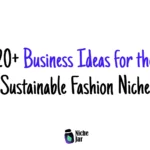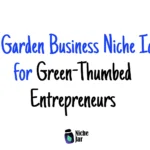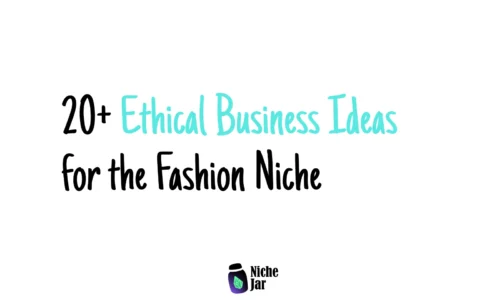- Senia
- 0 Comments
- 810 Views
Have you ever thought about turning your love for food into a small business? The artisanal food industry is full of profitable niche opportunities, from home baking setups to specialty coffee roasting. What makes it exciting is that many of these ideas can start small, right from your kitchen, and grow step by step. If you’ve been wondering where to begin, this guide shares over 20+ Niche Business Ideas to Explore in the Artisanal Food Industry—practical, detailed, and realistic paths you can explore.
The artisanal food industry has always had a special place in people’s hearts. Unlike mass-produced items, handcrafted foods carry a sense of authenticity, quality, and care that resonates with today’s consumers. From what I’ve seen, more people are willing to pay extra for foods that feel personal—whether it’s a loaf of sourdough baked locally, a jar of organic jam, or a handmade bar of chocolate. For everyday people like us, this creates an opening: a chance to turn creativity in the kitchen into a small, meaningful business.
But starting a food venture isn’t always straightforward. Many of us wonder: Which ideas are actually profitable? How much money do I need to start? And what if I fail? These are fair questions. While there’s no single guaranteed path, what helps is knowing where opportunities lie, what tools you’ll need, and what challenges to expect.
This post explores 20+ Niche Business Ideas to Explore in the Artisanal Food Industry. For each idea, you’ll find:
- A clear description of the business concept
- Why it can be profitable in today’s market
- A step-by-step guide to getting started
- Startup costs and monetization strategies
- Challenges and humble solutions
- Realistic examples or case studies
I don’t believe in “get rich quick” advice. Instead, my goal is to share practical paths that everyday people can actually try, even if they’re starting small.
By the end, you’ll walk away with not just ideas but also the confidence to explore the one that feels right for you. Let’s begin.

1. Artisanal Bread Baking
Why it works: Bread has been a staple for centuries, but artisanal loaves—like sourdough, rye, or heritage grain breads—are in high demand. People value freshness, natural ingredients, and the hands-on craft.
Steps to start:
- Learn a few core recipes (sourdough, multigrain, gluten-free).
- Invest in basic tools: Dutch oven, baking stone, proofing baskets.
- Start small: bake for neighbors, family, or at farmers’ markets.
- Scale with online orders or supply to local cafés.
Startup costs: $500–$1,500 for equipment and ingredients.
Monetization: Farmers’ markets, home delivery subscriptions, or wholesale supply.
Challenge: Bread baking is time-intensive. Solution: Streamline with batch baking and pre-orders.
Example: A home baker in Portland began selling 10 loaves per weekend. Within a year, demand grew enough to justify renting a shared kitchen.
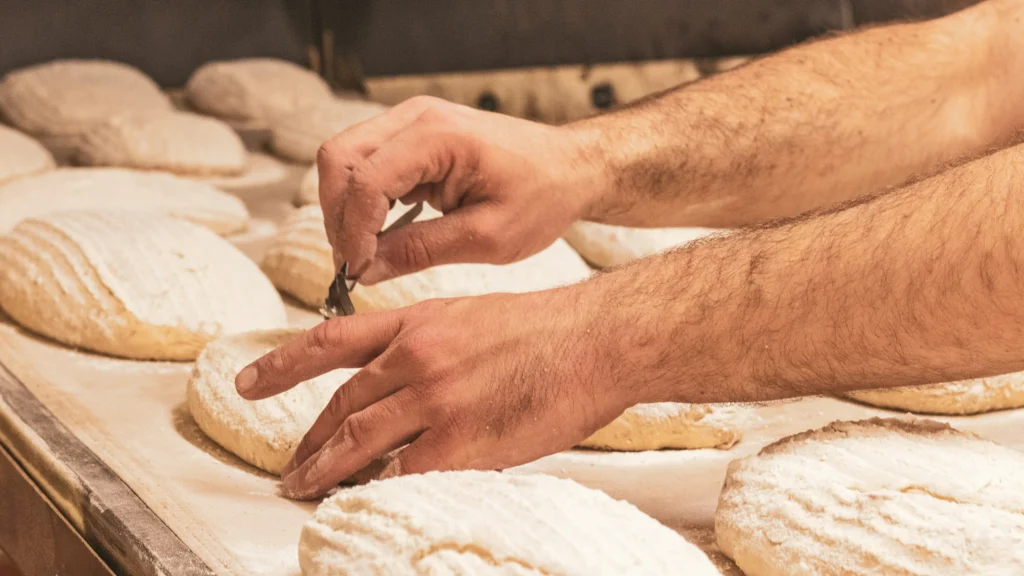
2. Gourmet Chocolate Making
Why it works: Handmade chocolates and truffles carry a sense of luxury. Consumers often buy them as gifts, which adds consistent demand around holidays.
Steps to start:
- Learn tempering techniques and start with simple recipes.
- Source quality cocoa and experiment with unique flavors.
- Package attractively—small gift boxes do well.
- Sell through local shops, markets, or online.
Startup costs: $1,000–$3,000 for molds, tempering tools, and packaging.
Monetization: Gift boxes, online shop, or wholesale to cafés.
Challenge: Shelf life can be short. Solution: Focus on pre-orders or small batches.
Example: A home chocolatier in London built a small Instagram following and now runs seasonal “pre-order only” truffle boxes.
3. Small-Batch Coffee Roasting
Why it works: Coffee lovers are always searching for unique blends and fresher roasts. Local roasters can compete with big brands by focusing on quality and story.
Steps to start:
- Start with a small tabletop roaster.
- Experiment with beans from different origins.
- Sell at farmers’ markets or as monthly subscriptions.
- Create branding that highlights freshness.
Startup costs: $2,000–$5,000 for roasting equipment and green beans.
Monetization: Subscription boxes, online sales, wholesale to cafés.
Challenge: Equipment is costly upfront. Solution: Consider renting a shared roasting space to begin.
Example: A roaster in Denver started with 10 subscribers and scaled to 150 monthly.
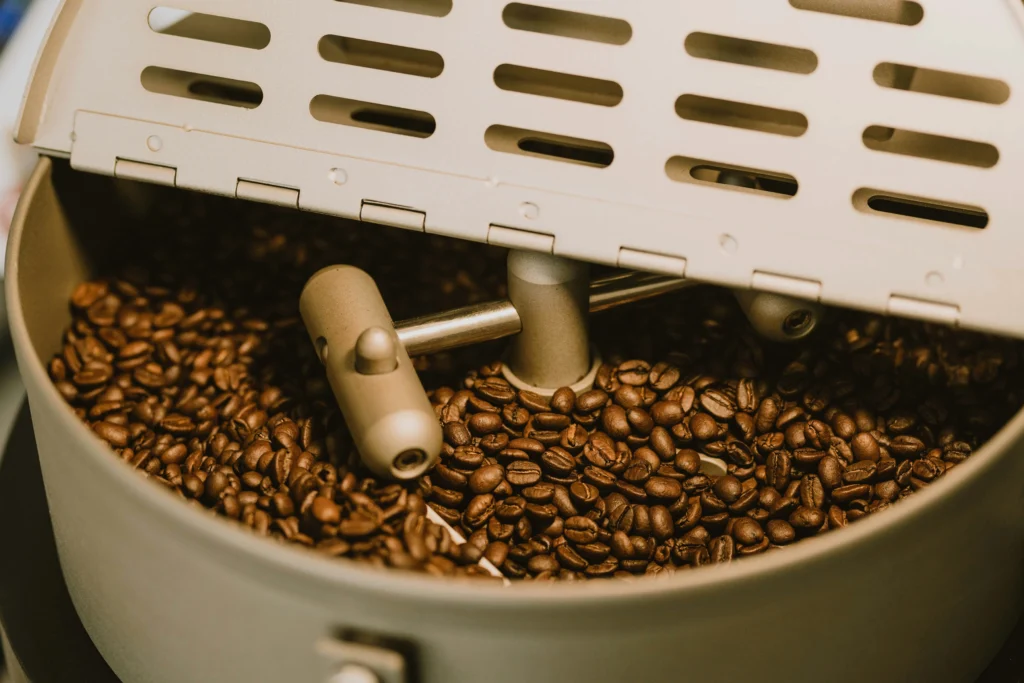
4. Specialty Tea Blends
Why it works: With growing interest in wellness, herbal teas and unique blends are popular. Niche blends—like sleep teas or digestion aids—sell well.
Steps to start:
- Source quality loose leaves and herbs.
- Experiment with flavor profiles.
- Package in eco-friendly bags or tins.
- Sell online or through wellness shops.
Startup costs: $500–$1,500.
Monetization: Direct-to-consumer sales, gift sets, or subscription services.
Challenge: Standing out in a crowded market. Solution: Focus on a theme, such as “wellness teas” or “local herb blends.”
Example: A small Etsy shop owner sells seasonal blends inspired by regional herbs.
5. Homemade Jams & Preserves
Why it works: People enjoy locally sourced, seasonal flavors. Small jars also make popular gifts.
Steps to start:
- Learn basic canning and preserving methods.
- Use seasonal fruits for unique flavors.
- Design simple but appealing labels.
- Sell at farmers’ markets or online.
Startup costs: $500–$1,500.
Monetization: Farmers’ market stalls, gift boxes, wholesale to local shops.
Challenge: Health regulations around canning. Solution: Research local cottage food laws first.
Example: A couple in Vermont turned surplus berries into a jam brand sold in local stores.
6. Gluten-Free Baked Goods
Why it works: Demand for gluten-free continues to grow, especially with health-conscious consumers.
Steps to start:
- Develop reliable recipes (bread, cookies, muffins).
- Market as gluten-free but delicious.
- Offer samples to build trust.
- Sell online, in markets, or cafés.
Startup costs: $1,000–$3,000.
Monetization: Farmers’ markets, online store, subscription snack boxes.
Challenge: Recipes can be tricky. Solution: Test thoroughly before selling.
Example: A baker in Toronto sells gluten-free brownies that outsell regular ones at local cafés.

7. Vegan Snacks & Treats
Why it works: The plant-based market is booming. Vegan cookies, bars, and chips appeal to health- and eco-conscious buyers.
Steps to start:
- Test simple vegan recipes.
- Highlight benefits: dairy-free, cruelty-free.
- Focus on fun branding and eco-packaging.
- Sell in markets or online.
Startup costs: $500–$2,000.
Monetization: Snack packs, monthly subscriptions, wholesale to health stores.
Challenge: Shelf life for fresh goods. Solution: Focus on dry or packaged treats.
Example: A small vegan cookie brand in California grew through local gym partnerships.
8. Organic Spice Blends
Why it works: People love ready-to-use spice mixes for convenience and flavor.
Steps to start:
- Source organic spices in bulk.
- Create blends (BBQ rubs, curry mixes, taco seasoning).
- Package in jars or resealable bags.
- Market online or to local specialty stores.
Startup costs: $500–$1,500.
Monetization: E-commerce, subscription kits, wholesale.
Challenge: Competition. Solution: Focus on unique blends or cultural themes.
Example: A New York-based startup built a brand around African-inspired spice blends.
9. Fermented Foods & Kombucha
Why it works: Gut health is a growing trend. Kimchi, sauerkraut, and kombucha have a loyal following.
Steps to start:
- Learn safe fermentation practices.
- Start small with kombucha or sauerkraut.
- Package clearly with labeling for probiotics.
- Sell at farmers’ markets or local shops.
Startup costs: $1,000–$3,000.
Monetization: Local sales, subscriptions, wholesale to health stores.
Challenge: Strict regulations. Solution: Start under cottage food laws, expand later.
Example: A kombucha brewer in Texas supplies five yoga studios with bottled drinks.
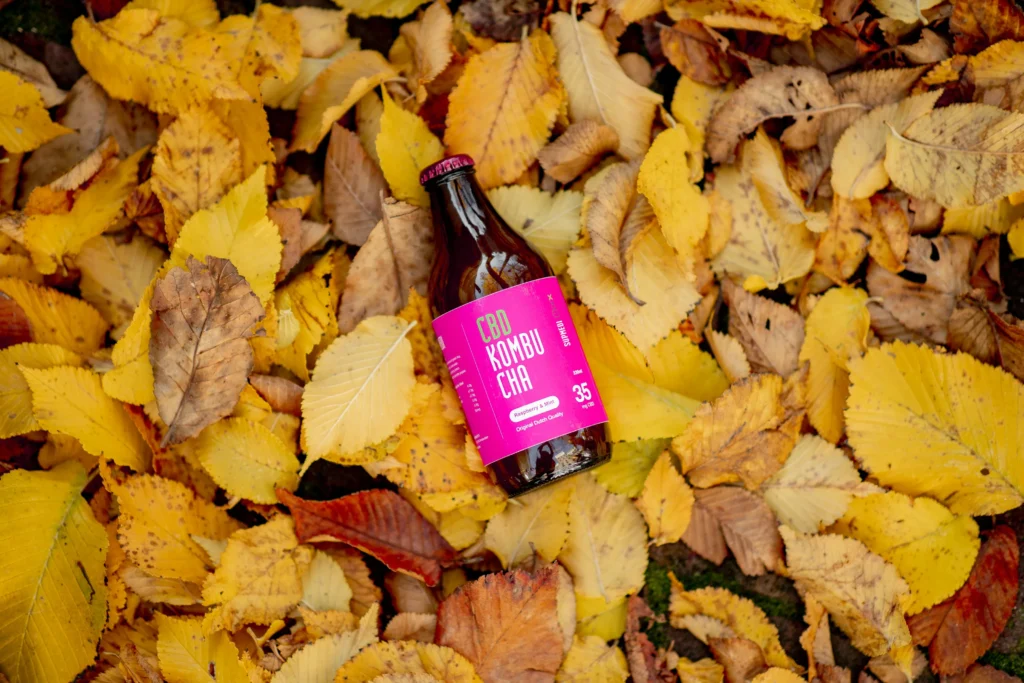
10. Craft Hot Sauces
Why it works: Hot sauce fans love trying new flavors. There’s a strong “collector” culture in this niche.
Steps to start:
- Experiment with peppers and flavor bases.
- Develop 2–3 signature sauces.
- Use creative, fun branding.
- Sell online and at events.
Startup costs: $1,000–$2,500.
Monetization: Bottled sauces, subscription boxes, wholesale.
Challenge: Balancing flavor and heat. Solution: Offer mild, medium, and extra-hot.
Example: A small hot sauce maker in Florida gained traction through TikTok taste-test videos.
11. Artisanal Cheese Making
Why it works: Cheese enthusiasts value handmade, small-batch varieties.
Steps to start:
- Learn cheesemaking basics (soft cheeses are easiest).
- Invest in aging equipment if scaling.
- Market at farmers’ markets and gourmet shops.
Startup costs: $2,000–$10,000.
Monetization: Farmers’ markets, direct-to-consumer boxes, cheese clubs.
Challenge: Aging requires time and space. Solution: Start with soft cheeses.
Example: A Wisconsin farmer sells goat cheese at local markets with steady demand.
12. Nut Butters & Spreads
Why it works: Peanut, almond, and specialty spreads (like pistachio) appeal to health-conscious buyers.
Steps to start:
- Invest in a good grinder.
- Create variations (honey, chocolate, spicy).
- Use glass jars with eco-friendly branding.
- Sell online and at local shops.
Startup costs: $1,000–$3,000.
Monetization: Farmers’ markets, e-commerce, wholesale.
Challenge: Allergens. Solution: Clearly label products.
Example: A small almond butter brand in Oregon built a following on Instagram with unique flavors.

13. Handmade Pasta & Sauces
Why it works: Fresh pasta and homemade sauces attract food lovers looking for authenticity.
Steps to start:
- Learn pasta-making techniques.
- Offer fresh or dried varieties.
- Pair with signature sauces.
- Sell via farmers’ markets or specialty stores.
Startup costs: $1,000–$3,000.
Monetization: Pasta kits, local sales, subscription meal packs.
Challenge: Fresh pasta has short shelf life. Solution: Focus on dried or vacuum-sealed.
Example: An Italian couple in New York turned Sunday pasta into a weekend farmers’ market stall.
14. Ethnic Street Food Carts
Why it works: Unique, authentic food experiences draw loyal customers.
Steps to start:
- Choose a specific cuisine (Mexican, Indian, Ethiopian).
- Develop 3–5 signature dishes.
- Start with a food cart or truck.
- Target local events or busy streets.
Startup costs: $5,000–$20,000.
Monetization: Street sales, catering, festivals.
Challenge: Permits and regulations. Solution: Research local street food licenses.
Example: A taco cart in Los Angeles grew into a small restaurant within three years.
15. Gourmet Popcorn Flavors
Why it works: Easy to make, fun to flavor, and perfect for gifting.
Steps to start:
- Experiment with flavors (caramel, spicy, savory).
- Package in resealable bags or tins.
- Sell online and at events.
Startup costs: $500–$1,500.
Monetization: Farmers’ markets, e-commerce, gift tins.
Challenge: Keeping popcorn fresh. Solution: Use airtight packaging.
Example: A family in Ohio built a popcorn shop specializing in seasonal flavors.

16. Local Honey & Bee Products
Why it works: Local honey is both tasty and seen as a natural remedy.
Steps to start:
- Learn beekeeping basics.
- Start with 1–2 hives.
- Sell honey, beeswax candles, or pollen.
- Brand around “local and sustainable.”
Startup costs: $1,000–$3,000.
Monetization: Honey jars, farmers’ markets, online shop.
Challenge: Bee health is delicate. Solution: Take beekeeping classes.
Example: A beekeeper in Vermont expanded from honey to beeswax skincare.
17. Plant-Based Meal Kits
Why it works: Busy professionals want easy, healthy meals at home.
Steps to start:
- Create simple plant-based recipes.
- Pre-pack ingredients in kits.
- Deliver locally or sell as subscriptions.
Startup costs: $2,000–$10,000.
Monetization: Subscription sales, online orders.
Challenge: Logistics of delivery. Solution: Start with local drop-off only.
Example: A small vegan meal kit company in Austin began delivering weekly to 20 households.
18. Heritage Pickles & Relishes
Why it works: Pickling has cultural roots and strong nostalgic appeal.
Steps to start:
- Use seasonal produce.
- Develop unique brines or family recipes.
- Package attractively in jars.
- Sell at local markets.
Startup costs: $500–$1,500.
Monetization: Farmers’ markets, online, wholesale.
Challenge: Food safety laws. Solution: Follow cottage food guidelines.
Example: A small brand in North Carolina sells Southern-style pickles in regional stores.
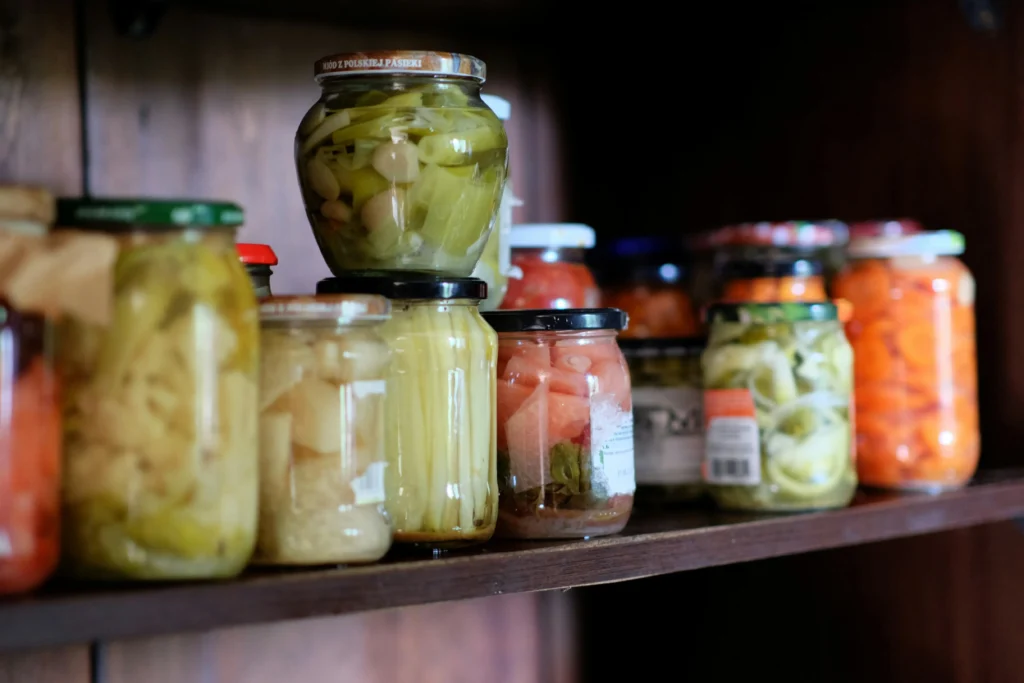
19. Farmers’ Market Baked Goods
Why it works: Markets create steady demand for cookies, pies, and seasonal goods.
Steps to start:
- Bake small batches of best-sellers.
- Get a market permit.
- Display goods attractively.
- Collect customer feedback to refine.
Startup costs: $500–$1,500.
Monetization: Weekly sales, pre-orders, catering.
Challenge: Weather affects turnout. Solution: Diversify into local cafés.
Example: A home baker in Seattle sells 100+ cookies each market day.
20. Low-Sugar or Keto Desserts
Why it works: Health-conscious customers still crave sweets. Low-sugar or keto-friendly desserts meet that need.
Steps to start:
- Master recipes using sugar substitutes.
- Highlight nutritional info on packaging.
- Market through gyms, wellness groups, or online.
Startup costs: $1,000–$2,500.
Monetization: Direct sales, subscription dessert boxes, wholesale to cafés.
Challenge: Taste can vary. Solution: Test recipes widely before launching.
Example: A keto brownie company in Texas sells online with monthly recurring customers.
21. Food Subscription Boxes (Bonus)
Why it works: Subscription models provide predictable income and convenience for customers.
Steps to start:
- Pick a theme (artisan snacks, sauces, or baked goods).
- Curate 4–6 items per box.
- Build a simple website for subscriptions.
- Start with monthly deliveries.
Startup costs: $2,000–$5,000.
Monetization: Subscription fees, upselling add-ons.
Challenge: Logistics and shipping. Solution: Start with local delivery.
Example: A family in Chicago created a monthly “Midwest artisan box” featuring local food makers.
The artisanal food industry is filled with possibilities. From simple ideas like baking bread to more adventurous paths like creating gourmet chocolates or kombucha, there’s a niche for nearly every passion. What matters most isn’t starting big—it’s starting at all. From what I’ve seen, many successful food entrepreneurs began with a single product and a small group of customers, then learned and grew over time.
If one idea stood out to you today, take a small step toward it. Try a recipe, research local regulations, or share samples with friends. Remember, every journey starts with one step.
And if you’d like to discover even more opportunities, feel free to explore other niche guides here on Nichejar.com. I’d also love to hear your thoughts—what artisanal food niche excites you most? Share in the comments or pass this post along to someone who might find it useful.
TLDR
In short: here are 7 of the most promising artisanal food business ideas you can start small and grow over time:
- Artisanal Bread Baking – fresh, handcrafted loaves for local markets.
- Gourmet Chocolate Making – handmade truffles and bars.
- Small-Batch Coffee Roasting – unique blends for coffee lovers.
- Specialty Tea Blends – herbal and wellness-focused mixes.
- Homemade Jams & Preserves – seasonal flavors with local fruit.
- Gluten-Free or Vegan Treats – growing demand for dietary alternatives.
- Food Subscription Boxes – curated artisanal products delivered monthly.
The key is to start small, test the market, and grow step by step. Success takes patience, creativity, and persistence—but with the right niche, it’s possible.


